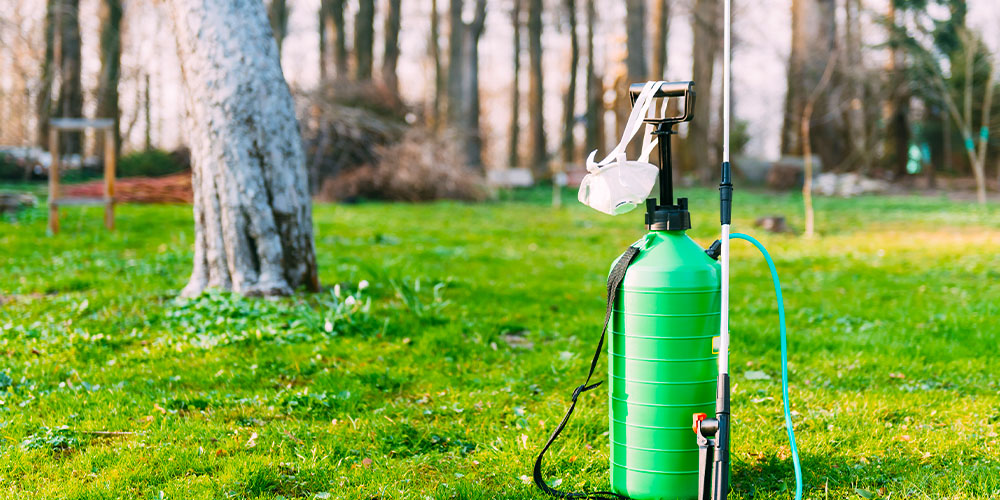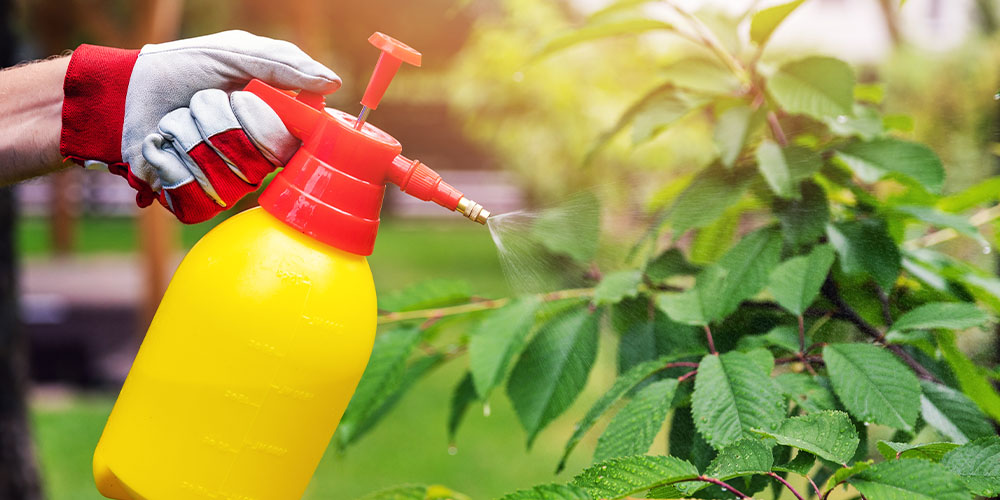Pests and diseases are the banes of every gardener’s existence. While it can be tempting to deal with those little buggers in any way that will get rid of them for good, selecting a less toxic option is better for you, your pets (if you have any), and the planet. Dormant sprays and horticultural oils are both an effective and ecologically friendly way to manage many different kinds of insect pests and some diseases. They are toxic to the pests you are trying to deter but they are much more eco-friendly than many alternatives.
So What Is Horticultural Oil Anyway?
Most pest control oils are made out of some form of mineral oil, which is a refined petroleum product. Some vegetable-based products like soybean oil work effectively as a pesticide as well. Typically, the oil is combined with a mixing agent, which helps it mix with water so it can be turned into a spray.
Initially, oil-based pesticides were developed as a solution to manage pests attacking fruit trees. You couldn’t just use any pesticide on a fruit tree because, for the most part, they are grown as edible products. But, they are also super prone to attracting pests. Thus, oil-based pesticides were developed and sprayed on trees during the dormant season before the trees would start to bud. The idea was to kill off icky overwintering pests like mites and aphids.
Horticultural oils are a good alternative to traditional insecticides as they are safe for humans, they are largely safe for wildlife, and they don’t tend to have too much of an effect on the more beneficial bugs like honey bees and ladybugs.

What Is The Difference Between Horticultural Oil and Dormant Spray?
Dormant oil was originally a much heavier weight and less refined product than what you will see on the shelves today. They were generally unsafe to use on buds or foliage of any kind, but they have since been, for the most part, replaced with more lightweight horticultural oils.
Dormant oil usually just refers to when you apply it, but there are some dormant spray products available that have a higher mineral oil content. These come with temperature restrictions, as they can burn plants when used at or over 90° F. They are best applied in early spring, and in general, in the early morning. Additional restrictions include potentially damaging some trees like evergreens, as they can remove the waxy coating on their needles.
While it can be tempting to deal with those little buggers in any way that will get rid of them for good, selecting a less toxic option is better for you, your pets (if you have any), and the planet.
Horticultural Oil: When to Apply it & How it Works
So, we know that horticultural oils are generally safer than other insecticides, but you might be wondering how they actually work. They are not a poison. Rather, what they do is coat the target insects like mites, scale, and aphids in a thin film which, in essence, suffocates them as they breathe through pores on their bodies.
Timing is pretty important when using dormant oils. They should always be applied before your flowering trees or shrubs have come out of dormancy, which means before you see any sign of leaves or flower buds. Alternatively, you also don’t want to apply them too early because the insects you are trying to kill off will still be dormant as well, which means it won’t have as much impact on them. Ideally, dormant oils should be applied as close as possible to ‘bud break,’ usually around late March to early April.
With that said, improvements in the refining process of horticultural oils include the development of “superior” and “summer” oils, which are less likely to burn plants than traditional dormant oils. If they are mixed at the appropriate concentration and applied carefully, they can be used during the growing season.

Precautions to Take When Applying Horticultural Oil
There are a few precautions to take when applying dormant sprays or horticultural oil to keep yourself and your plants protected. While they are not poisonous, petroleum-based products can still cause some mild irritations if they come into contact with your eyes or skin.
This means you should always use proper protective equipment when applying horticultural oils. Usually, suggestions will be listed on the label of the product you purchase, but long sleeves, pants, gloves, and goggles are a safe bet. Oils are also flammable, which means they should be stored safely away from heat sources or anything combustible.
When it comes to your trees and shrubs, you will want to avoid using horticultural oil on anything that is heat or drought-stressed or in humidity over 90%. Avoid applying when temperatures are below freezing as coverage will be uneven, and most pests will not be active and breathing then anyway. Avoid using horticultural oil within two weeks to a month of a sulfur-based application, as combined, they are toxic to plants.
There are also some plants, trees, and shrubs like beech, Douglas fir, white pine, and maple trees that are quite sensitive to horticultural oils, and you should avoid using them on these altogether. Most products will have an extensive list on the label.
Dealing with pests can be, well, a pain! But, with the right knowledge, tools, and intentions, you can keep your shrubs, trees, and plants pest-free. We would be happy to answer any questions you might have about planting or pest control, so stop by for a visit to our garden center!

